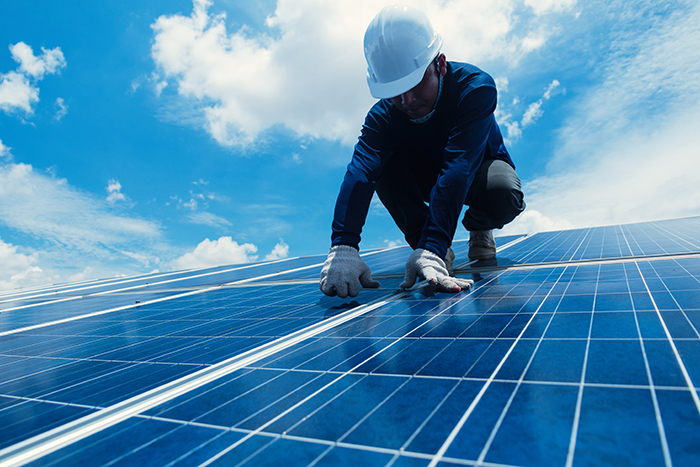
A team of scientists at Case Western Reserve’s Solar Durability and Lifetime Extension (SDLE) Research Center recently unveiled a new method to quickly and accurately read tens of thousands of images of solar panels as they break down and ultimately fail over time.
This latest research, believed to be the first of its kind, relies on electroluminescence photography coupled with “machine learning” to build on previous gains in measuring the effect of weather and time on solar panels at the research center.
“Our partners and collaborators in the industry are very excited because this method will work for any brand and help them improve their solar panels,” said Roger French, the Kyocera Professor of Materials Science and head of the SDLE Research Center.
Until now, solar-panel manufacturers had relied primarily on single, static photographs of the photovoltaic cells taken after they failed. They could only draw limited conclusions about why the panel degraded and lost power.
Now, using tens of thousands of images provided to the lab by manufacturers during the lifespan of their solar panels, the research team has devised a way to better reveal how and where the photovoltaic cells failed—and to predict the future reliability of those panels.
That’s an important step in gauging the reliability of solar panels because the information allows manufacturers to improve their design and function, resulting in longer-lasting solar panels and, ultimately, lower cost.
‘Machine learning’ makes the difference
Machine learning—in this case, the ability of a computer program to recognize changes in images taken every 500 hours of a working solar panel to indicate a cell’s wear and tear—was the key to advancing solar-panel diagnostics and then accurately predicting future failures.
“We taught the algorithm to identify ‘This is corroded, this one is cracked’ and so on,” French said. “Once it ‘knows’ what it is seeing, it can begin to predict when it will occur.”
A video representation of the 3,000-hour accelerated lifetime of a series of panels from different manufacturers clearly shows the darkening (degradation) of certain cells in a cluster of solar panels. The imagery was shared earlier this month on Facebook and Twitter by the U.S. Department of Energy (DOE), which is supporting the research.
“This is the first time scientists have seen the entire lifespan of the PV cells in a solar panel,” French said.
The DOE’s Solar Energy Technologies Office (SETO) also highlighted the SDLE lab’s work this month as one of its “Success Stories.”
French credited graduate student Justin S. Fada for essentially launching the research several years ago as a first-year undergraduate student by literally disassembling and rebuilding a standard $500 camera to capture infrared images over time. The team used Fada’s camera to record the images on sample-sized panels, which were exposed to extreme weathering in the SDLE lab.
Fada’s technique is being duplicated by solar-panel companies who have shared more than 40,000 images with the Case Western Reserve team for analysis.
The SDLE research center opened in 2011 and has since then been working on various projects to accelerate the natural wear and weathering of solar panels and other materials, such as the siding on homes,
The DOE has awarded about $4.5 million to the research center over the last several years, including $1.47 million last year to focus on testing the interactions of a new commercial silicon solar-cell technology—called passivated emitter rear cell—with the packaging materials in solar panels aged under accelerated and real-world conditions.
Making Solar Panels Last Longer was originally published on the Case Western Reserve University website.